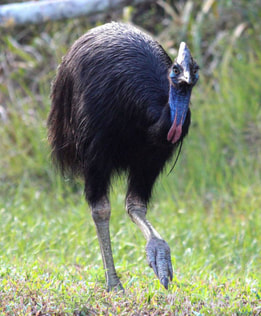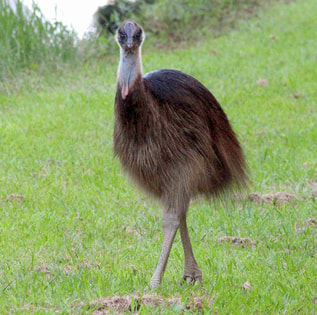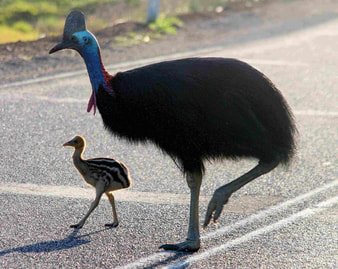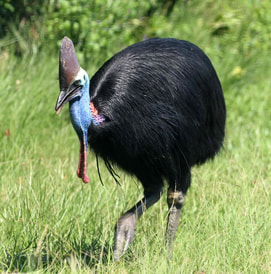| MB Development Plan 14 February 2017 Draft_.pdf | |
| File Size: | 14441 kb |
| File Type: | |
Difference
|
Invest In The Environment
|
Lot 66!
We've done it! Now we can celebrate
To publicly acknowledge this milestone in Mission Beach conservation, Two special events were held by C4 and QTFN. On Monday the 19th of May 2014 an official unveiling of the sign for Lot 66 was hosted by C4 and QTFN at C4's location at Mission Beach.
This event had a range of official guests with speeches. Media was also present. In addition to the official guests, members and supporters were invited to attend to be an appreciative audience. The unveiling was followed by light refreshments.
On Saturday the 24th of May 2014 C4 held a members and community supporters celebration at C4. A display of the history of the campaign to save Lot 66 was made available and it was a time to reminisce with others who had been working over the years to achieve this memorable outcome.
We've done it! Now we can celebrate
To publicly acknowledge this milestone in Mission Beach conservation, Two special events were held by C4 and QTFN. On Monday the 19th of May 2014 an official unveiling of the sign for Lot 66 was hosted by C4 and QTFN at C4's location at Mission Beach.
This event had a range of official guests with speeches. Media was also present. In addition to the official guests, members and supporters were invited to attend to be an appreciative audience. The unveiling was followed by light refreshments.
On Saturday the 24th of May 2014 C4 held a members and community supporters celebration at C4. A display of the history of the campaign to save Lot 66 was made available and it was a time to reminisce with others who had been working over the years to achieve this memorable outcome.
Corridor win hailed
A 20-year Samson and Goliath battle by a group of volunteers to conserve a critical wildlife corridor at Wongaling Beach from subdivision and development has been won following a unique agreement between C4 and Queensland Trust for Nature (QTFN).
The 25ha block known as Lot 66 is integral in linking uplands habitat in the Wet Tropics World Heritage Area near Ravenshoe right through to the Great Barrier Reef World Heritage Area. The lot borders residential development near Mission Circle and Rockingham Road and the Djiru National Park.
The corridor is essential to ensure access to seasonal feeding sites and for gene pool diversity of cassowaries and other wildlife.
C4 president Maurice Franklin said the fight for the wildlife corridor was actually a series of negotiations that saw the purchase of Lot 66 and the designation of Cassowary Coast Regional Council owned freehold Lot 802 on the seawardside of Wongaling Road (Cassowary Drive) as a cassowary corridor with management passing to the Djiru Warrangburra Aboriginal Corporation. This lot connects with Djiru land on the beachfront.
“Different personalities have played different roles all the way through; it has been a mammoth task, from fundraising, grant application writing, court battles, and lobbying of politicians of all persuasions,” Maurice says. “Everyone who has had a role should be very proud.
“In the 1990s, when Lot 66 was under threat from development a campaign to protect it was spearheaded by volunteer lawyers at the Environmental Defenders’ Office and helped by local activist Liz Gallie. Organisations such as Terrain, NRM, Biotropics, CSIRO, James Cook University and the Wet Tropics Management Authority helped document the ecological value of the land. The campaign failed in the courts but was effective enough to convince then Minister for the Environment Peter Garrett of the need to protect it. In 2008, he used his ministerial power to block the development as ‘clearly unacceptable’. Lot 66 had a reprieve but was still under threat from development. Two further applications were made and successfully prevented.
“It was clear that buy back was the best solution.” The first major donation of $16,000 came from the winding up of a C4 nature-based tourism project sponsored by the Sidney Meyer Fund in 1995.
This was followed by $10,00 from Bokhara Foundation in 1997. The fund grew with donations from trade union branches, service clubs, birdwatching groups, local residents and individuals from Australia and overseas.
“Throughout the struggle to find the funds, the land remained on the market with the added risk that it might sell to a third party though communication with the owners remained open,” he said.
A 20-year Samson and Goliath battle by a group of volunteers to conserve a critical wildlife corridor at Wongaling Beach from subdivision and development has been won following a unique agreement between C4 and Queensland Trust for Nature (QTFN).
The 25ha block known as Lot 66 is integral in linking uplands habitat in the Wet Tropics World Heritage Area near Ravenshoe right through to the Great Barrier Reef World Heritage Area. The lot borders residential development near Mission Circle and Rockingham Road and the Djiru National Park.
The corridor is essential to ensure access to seasonal feeding sites and for gene pool diversity of cassowaries and other wildlife.
C4 president Maurice Franklin said the fight for the wildlife corridor was actually a series of negotiations that saw the purchase of Lot 66 and the designation of Cassowary Coast Regional Council owned freehold Lot 802 on the seawardside of Wongaling Road (Cassowary Drive) as a cassowary corridor with management passing to the Djiru Warrangburra Aboriginal Corporation. This lot connects with Djiru land on the beachfront.
“Different personalities have played different roles all the way through; it has been a mammoth task, from fundraising, grant application writing, court battles, and lobbying of politicians of all persuasions,” Maurice says. “Everyone who has had a role should be very proud.
“In the 1990s, when Lot 66 was under threat from development a campaign to protect it was spearheaded by volunteer lawyers at the Environmental Defenders’ Office and helped by local activist Liz Gallie. Organisations such as Terrain, NRM, Biotropics, CSIRO, James Cook University and the Wet Tropics Management Authority helped document the ecological value of the land. The campaign failed in the courts but was effective enough to convince then Minister for the Environment Peter Garrett of the need to protect it. In 2008, he used his ministerial power to block the development as ‘clearly unacceptable’. Lot 66 had a reprieve but was still under threat from development. Two further applications were made and successfully prevented.
“It was clear that buy back was the best solution.” The first major donation of $16,000 came from the winding up of a C4 nature-based tourism project sponsored by the Sidney Meyer Fund in 1995.
This was followed by $10,00 from Bokhara Foundation in 1997. The fund grew with donations from trade union branches, service clubs, birdwatching groups, local residents and individuals from Australia and overseas.
“Throughout the struggle to find the funds, the land remained on the market with the added risk that it might sell to a third party though communication with the owners remained open,” he said.
“In 2011, C4 applied for a $500,000 Caring for Country grant and for two years we remained hopeful of a positive outcome. In August 2013, the Federal Government dashed these hopes with rejection. C4 then resolved to seek corporate sponsors and crowd funding. We had raised $270,000 but our volunteers were almost exhausted mentally and physically.
“Then, in September, our ‘White Knight — QTFN — appeared. C4, together with CCRC officers and Djiru Elders, discussed the project with QTFN General Manager Ben O’Hara. A series of meetings resulted in QTFN agreeing to partner with C4, provide the balance of the $550,000 plus GST and manage the acquisition, convenenting to Nature Reserve and sale of Lot 66 as one parcel.”
Mr O’Hara said the wildlife corridor’s creation highlighted the benefits of a commercial approach to conserving Queensland’s biodiversity and protecting its natural landscapes.
“It was thanks to C4’s efforts from the very beginning and on following through with the council and the Djiru Warrangburra Aboriginal Corporation that we were able to get the result,” he said.
C4’s approaches to the many adjoining private landowners for access to the boundaries of Lot 66 for survey and restoration work has met with an enthusiastic response.
Photos by Jeff Larson
Additional information and more links can be viewed at: http://www.missionbeachcassowaries.com/
“Then, in September, our ‘White Knight — QTFN — appeared. C4, together with CCRC officers and Djiru Elders, discussed the project with QTFN General Manager Ben O’Hara. A series of meetings resulted in QTFN agreeing to partner with C4, provide the balance of the $550,000 plus GST and manage the acquisition, convenenting to Nature Reserve and sale of Lot 66 as one parcel.”
Mr O’Hara said the wildlife corridor’s creation highlighted the benefits of a commercial approach to conserving Queensland’s biodiversity and protecting its natural landscapes.
“It was thanks to C4’s efforts from the very beginning and on following through with the council and the Djiru Warrangburra Aboriginal Corporation that we were able to get the result,” he said.
C4’s approaches to the many adjoining private landowners for access to the boundaries of Lot 66 for survey and restoration work has met with an enthusiastic response.
Photos by Jeff Larson
Additional information and more links can be viewed at: http://www.missionbeachcassowaries.com/



